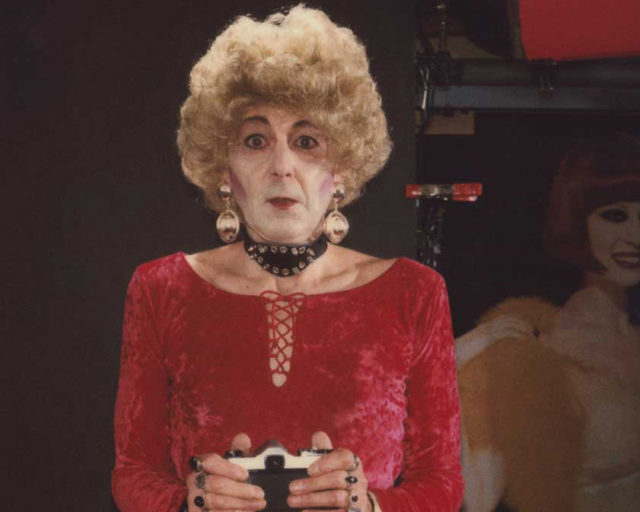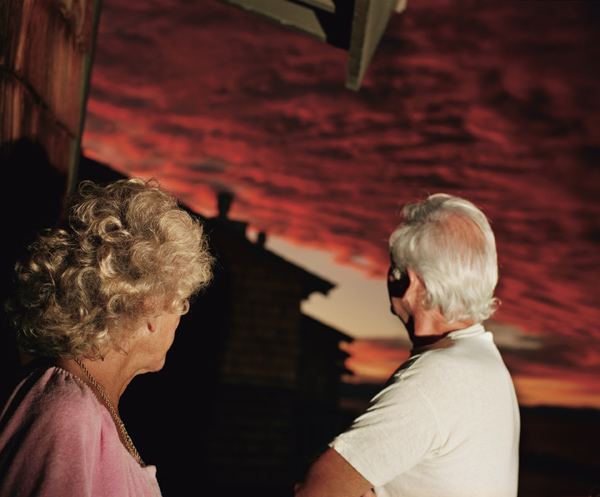From Rome to Disneyland, Catherine Wagner Finds “Clues” to Civilization
Since the 1980s, the photographer has searched for the foundations of culture—and discovered gender codes in high art and kitsch.
Catherine Wagner, Constantine Fragments, 2014
A giant marble head of the Roman emperor Constantine the Great, seemingly wrested from a larger sculpture, sits on a pedestal. Both are encased in a narrow enclosure, a telephone booth–like stall that in turn is minimally braced by metal scaffolding. Around it are stone body parts, pieces of what was once was a complete sculpture of the man, enveloped in an irregular matrix of boxes that resembles an unfinished Eames shelving unit.
Catherine Wagner photographed Constantine Fragments (2014) at the Musei Capitolini in Rome, while she was in residence at the American Academy, and the picture elegantly breaks down concepts of power and history, literally into pieces. It is historical evidence captured in situ, broken yet organized and protected, however provisionally.

Wagner’s photography is consistently about foundations of culture, so it is fitting that her first solo show at Jessica Silverman Gallery in San Francisco would survey the core of her artistic inquiries. While the show covers a lot of ground—the photographs span four series from 1982 to 2014—Clues to Civilization is but one possible remix of her practice. The works from the different decades are arranged associatively, revealing a long-term project rather than discrete series.
“The foundation of the work is built from an idea about how knowledge is transferred and how we look at the times and culture in which we live, hence the title, Clues to Civilization,” Wagner told me recently, as we walked through the exhibition. I have a long relationship with Wagner, starting with her inclusion in a project-based, institutional critique group show I curated for the de Young Museum in 1999. We’ve been in dialogue about art and life ever since. She is gracious, hardworking, and a masterful and highly entertaining storyteller. Each of her photographs has a narrative within its carefully realized composition.
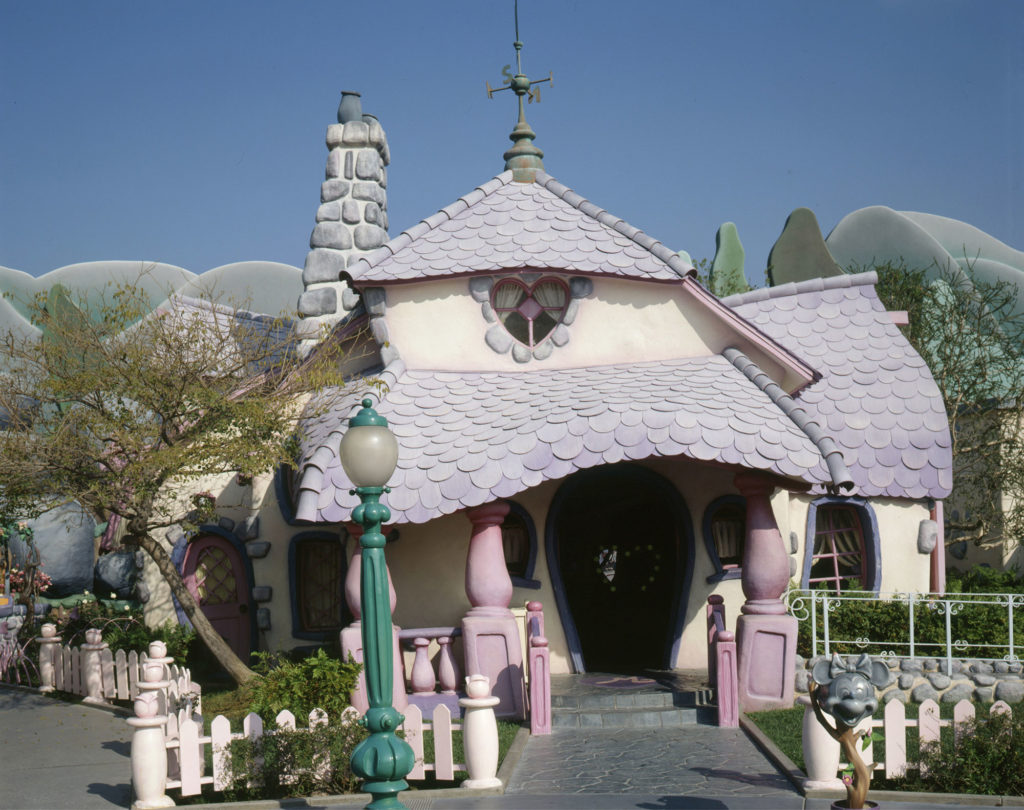
Wagner’s mid-1990s Realism and Illusion series was the result of her rare behind-the-scenes access to international Disney theme parks. The project was commissioned by the Canadian Centre for Architecture in Montreal, where the work was first shown in 1997. “When I received the call, I said, I think you have the wrong person,” she said, referring to her unfamiliarity with the Americana aspect of Disney: Wagner’s father was German and her mother was from the Philippines; Wagner grew up in the Bay Area. “I’m from an immigrant family, my parents knew nothing about this as an American culture,” she said. “I’d never been to Disneyland. I came without that background that Disneyland was this happiness place.”
She approached the theme parks with a critical, conceptual lens, revealing the architectural, design, and cultural norms imparted by these corporately controlled fantasy lands. Southern California Landscape (1995), for example, shows a faux Alpine village on a reduced scale, with artificial snow–dusted mountains at the perimeter. Hovering over the scene in the background are life-size trees. “I was a kid in a candy store,” she said. “Not that I wanted to ride all the rides, but [I wanted] to be able to engage with the ways in which architecture was presenting itself.”
Nature is also built here, as in Japanese Elephants (1995), a black-and-white picture in which the animatronic pachyderms at Tokyo Disneyland have Hello Kitty–like grins. The color pigment print Tokyo Wildlife (1995) captures the blur of motion of more realistic looking animals. “My mom loved this piece because it reminded her of the Philippines,” Wagner said.
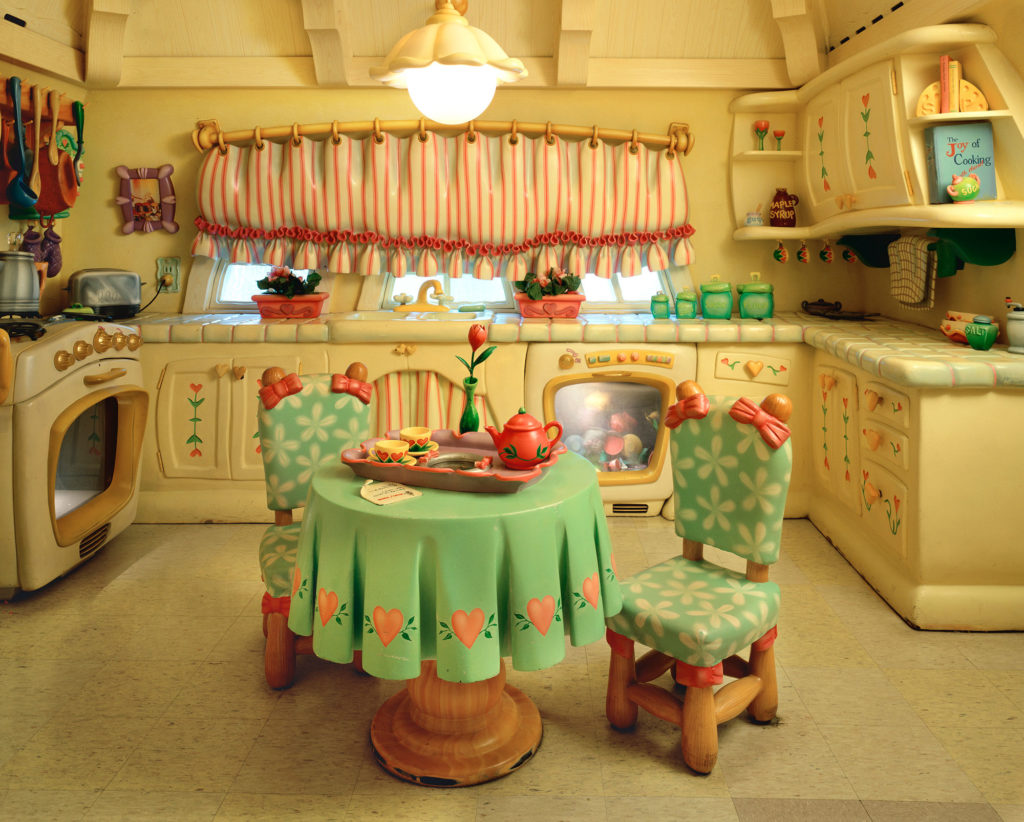
Like many artists, Wagner has been shifting her practice over the last year. “During the pandemic, I really started to look at my archive,” she said. In revisiting older works, she made the decision to present the pictures at a larger scale and with revised titles. In 1995, she printed Minnie Mouse’s Kitchen; Mickey’s Toontown, Disneyland, Anaheim, CA at a modest scale. In the current exhibition, the work is shown as a monumental 40-by-50-inch archival pigment print—more than twice its original size—and retitled Dream Kitchen. It’s a strategy that nudges towards expanded interpretations and a more elemental focus.

This strategy is also effective in works from Wagner’s noted American Classroom series, begun in 1983 and originally printed on gelatin-silver paper. Here they are presented as new, crisp black-and-white pigment prints, again at a larger scale and with new titles focusing on subject matter—world maps, science experiments, and a desk densely etched with student scrawls. The last provides the witty title for “DH Lawrence Kicks Ass” (University Humanities Classroom) (1983–87). Wagner knows much about academic settings: she has been teaching at Mills College since 1987 and currently chairs the college’s art department.
Clues to Civilization includes works that Wagner made in Italy after she received the Rome Prize in 2013. Her fellowship resulted in photographs of antiquities in Roman museums that uphold historical gender codes. She points to two color pictures, Philosophers’ Hall and Emperors’ Hall (both 2014), each showing museum galleries filled with busts. “In Philosophers’ Hall, we see ‘great men,’ yet there isn’t a woman in it,” she said. “I walked over to another room where I see a presentation of a woman. They’re remembered in the wall didactics as ‘Busto Femenino,’ the bust of a woman, whereas the men would be titled their name.”
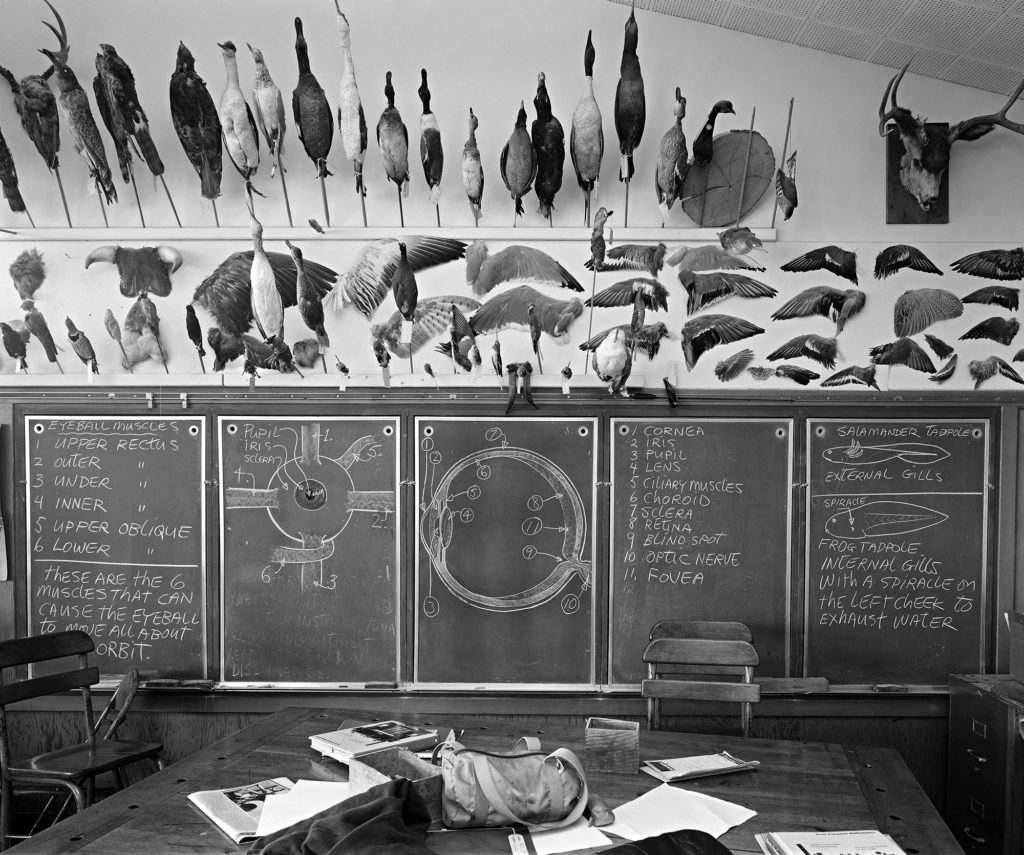
All photographs courtesy the artist and Jessica Silverman, San Francisco
Such clues to civilization are evident in each series here. Most were made through opportunities to photograph internationally, in a range of culturally resonant sites, and in response to what she would find there. “I’m not shooting fast,” Wagner said. “None of this work is street photography, I’m either working with an 8-by-10 camera or extremely deliberately. There’s an athleticism to have to construct these ideas and carry them through in situ.” Seeing the career-spanning photographs offers a space to survey an artist’s aesthetic and conceptual strategies. “I work hard to make the photographs beautiful,” Wagner said. “Whether or not you are interested in this, beauty is the thing that pulls you in. Then you have to wrestle with what is there.”
Catherine Wagner: Clues to Civilization is on view at Jessica Silverman Gallery, San Francisco, through August 14, 2021.











